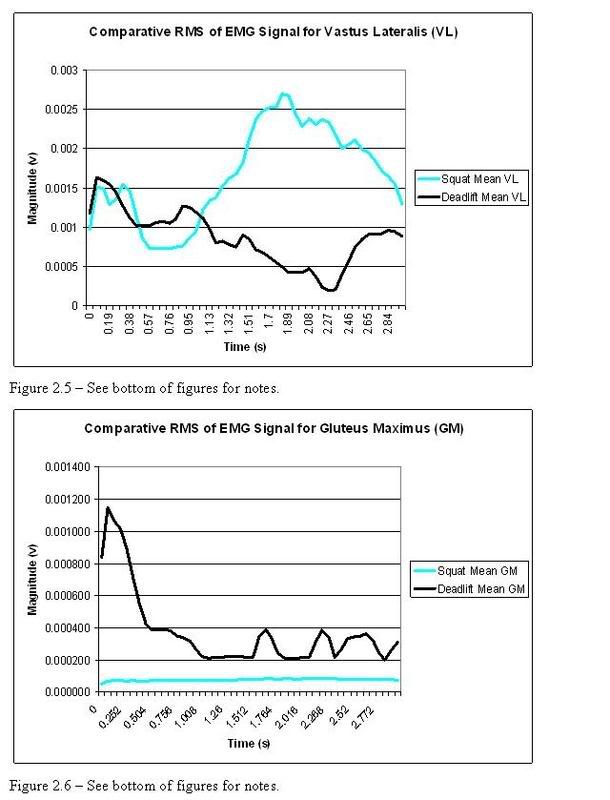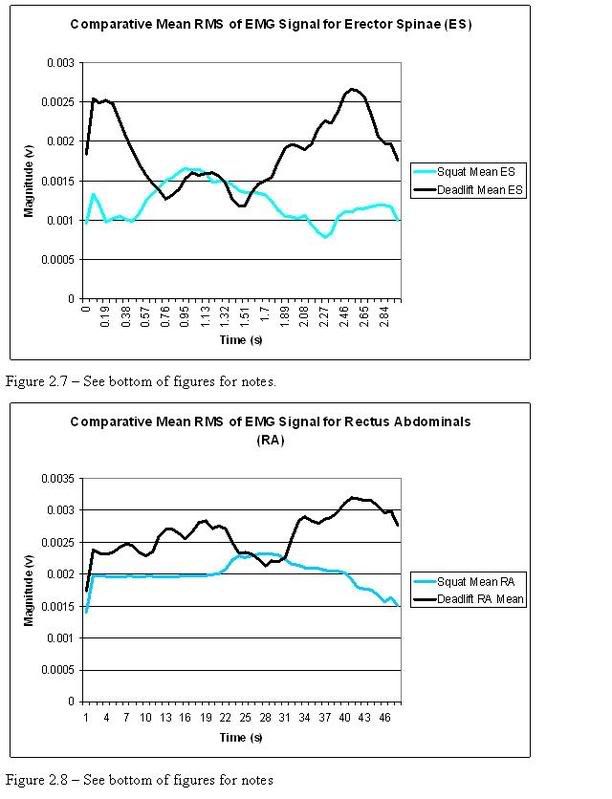It goes like this;
- Deep squats involve more posterior chain than conventional parralel squats.
However…
-
Parralel box squats, with wide stance, and powerlifting competition style squats, probably strengthen the glutes and hamstrings atleast as much as deep squats. In these ‘power’ style squats, there is a pronounced forwards lean from the hip, which indeed involves more length tension in hamstrings than slightly more erect parralel squat. Remember that the powerlifters have a vertical shin - even at parralel position (plus forwad lean), plus heavy weight = tremendous hamstring length/tension relationship etc… Olympic deep squat has a very positive shin angle (more relevent to sprinting - some would say.)
-
The shittiest technique you ever saw some one doing a squat, they was probably doing a quater squat / good morning. And yet, that is a geniuine powerlifting training exercise, and greatly strengthens the hamstrings, but not enough gluteal stimulus compared to box squatting.
-
Powerlifting style squats and box squats, greatly recruit the posterior chain, but are more taxing to the c.n.s than deep squats.
And that, number 4, is why deep squats probably come up top trumps in the squat debate.
I’m not overly interested in studies comparing ‘deep’ squats to ‘half squats’. There was a debate years ago on this forum about ‘half’ squats. We ended up concluding that one persons ‘half squat’ is another persons ‘quater squat’. And that the ‘half squats’ generally used in studies are more like 'third squats, probably with the strange cue of trying to keep the torso as near to vertical as possible. A novices way of interpreting ‘straight back’. They are rarely true parralel, and so ofcourse their half squats are not going to have a lot of posterior chain recruitment.
Also…
Any type of squat can significantly enhance the conditioning and strength of the quadriceps. Even high rep with very light weight, can strengthen quadriceps - which are a very versatile muscle.
But in order for weight training to truly enhance posterior chain strength, you have to add a lot of weight, or go for max acceleration with a medium weight, for say 10 explosive reps. And pause between reps (in standing position) and then lower, and explode back up. The pause allows you to do more for the fast twitch fibers.
If your not moving fast, the only way to add strength and power to posterior chain, is to add a lot of weight. Sounds a trifle obvious, but the same is not allways true for some of the anterior chain muscles such as quadriceps.
Going ‘heavy’ is probably why Loiuse Simmons (West side barbell) is convinced that the squat is hamstring dominant over quads. For his athletes, that might be the case. (Think of the weights they are lifitng, the wide stance, the forwards lean etc… - but they are going parralel.) And as a side note: I have NEVER seen a championship Olympic lifter with greater hamstring developement than a powerlifting champion of similar weight. The powerlifters tend to have bigger hammies, but it is from a large pool of posterior chain exercises. But the need is there, to support the big two powerlifts.
If you cant handle a lot of weight in a deep squat position (some can’t), then try explosive reps with roughly around 60-65% of 1 rep max. Go for the ‘feel’ rather than pedantic about the numbers though. You’ll know when you get the feeling. And then some high pulls with similar %'s. It will feel like “intensive tempo” weight training, if there is such a term.
I did weights for a long time, and I’m not going back to barbell work, but I have to admit, I had some nice results when I occasionally switched to explosive weight training, instead of my usuall ‘grind them out’ reps. If you can’t escape the gym, I seriously recomend cycling with explosive squats, and later; back to general squats at standard bar speed.





